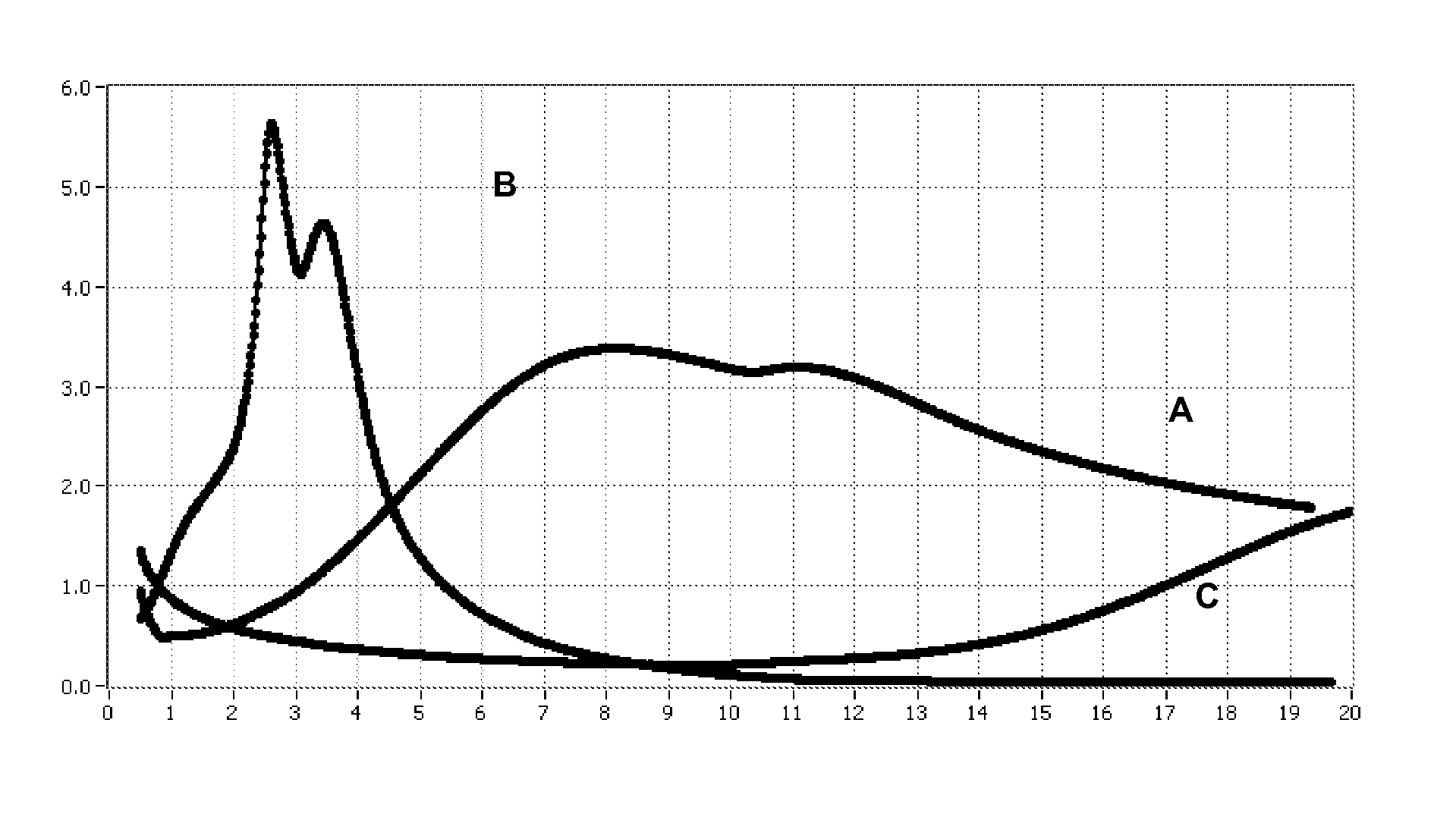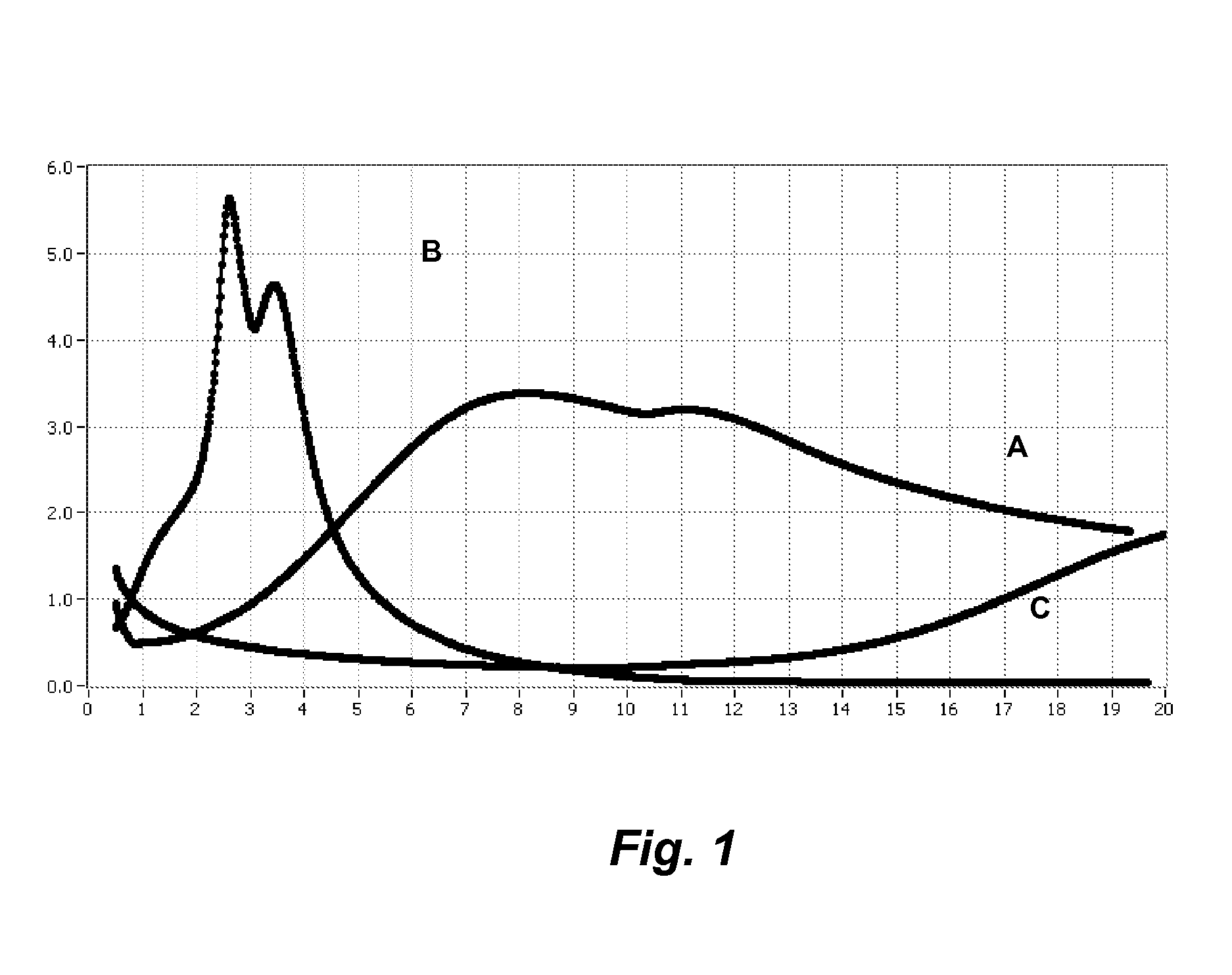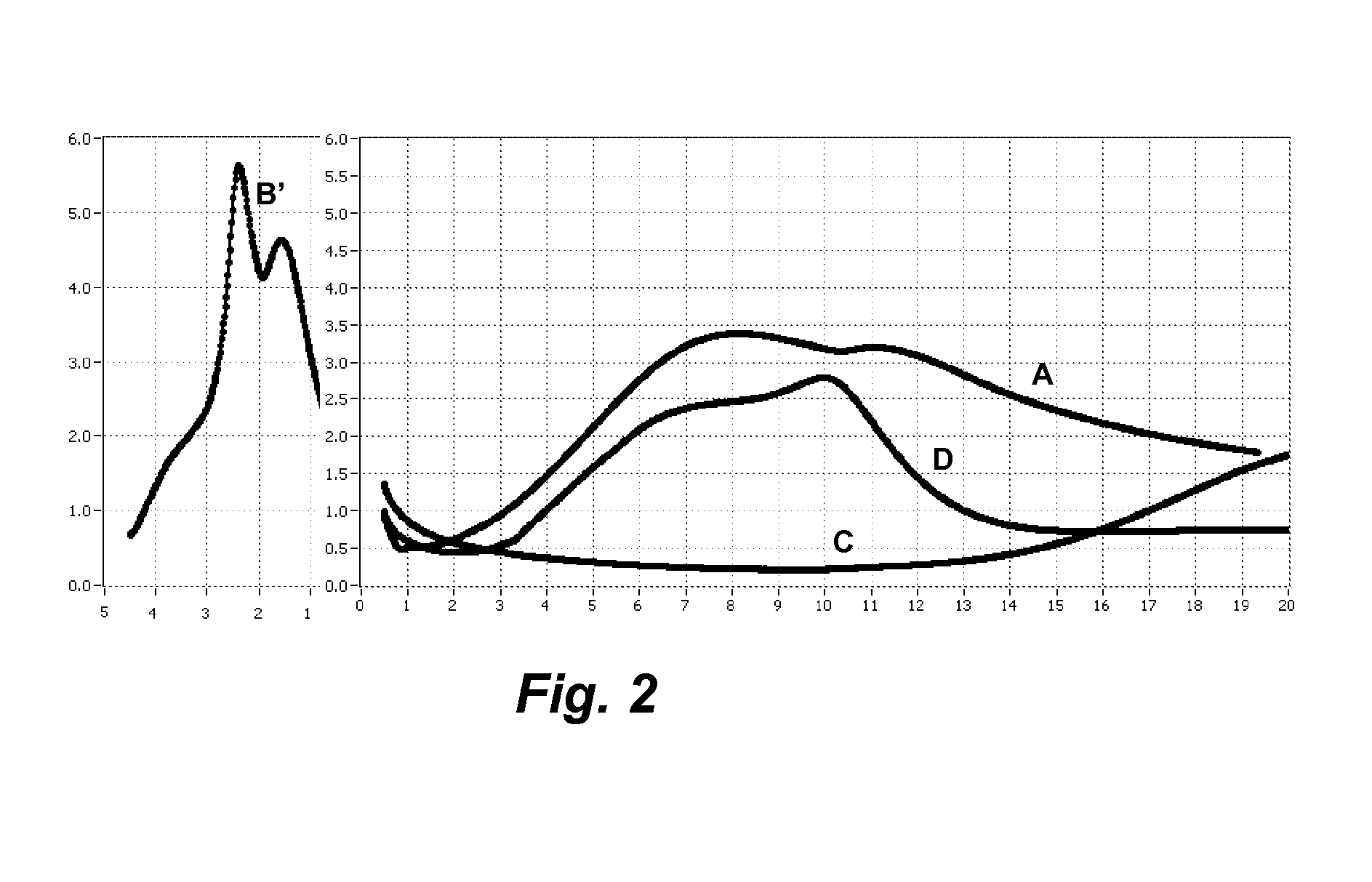Suppression of antagonistic hydration reactions in blended cements
a technology of antagonistic hydration and blended cement, which is applied in the direction of climate sustainability, solid waste management, sustainable waste treatment, etc., can solve the problems of releasing carbon dioxide into the atmosphere, affecting and more reactive fly ashes, such as astm class c fly ashes, which are known to affect the hydration of portland cement. , to achieve the effect of suppressing antagonistic hydration reactions
- Summary
- Abstract
- Description
- Claims
- Application Information
AI Technical Summary
Benefits of technology
Problems solved by technology
Method used
Image
Examples
example 1
[0061]A Class C fly ash and ordinary Portland cement, with their respective chemical compositions determined by x-ray fluorescence, are shown in Table 1 below. The amount of free lime (in the form of calcium oxide) is determined by the Franke method. These materials were used to prepare Portland cement / fly ash mortar samples wherein the fly ash was pre-hydrated in accordance with the methods of the present invention. The mortar composition is further described in Table 2 following Table 1 below.
[0062]
TABLE 1% weightChemical elementPortland CementClass C Fly AshSiO219.9933.97Al2O34.7718.26Fe2O33.046.38CaO62.8327.46MgO3.814.68SO32.892.64Na2O0.281.71K2O0.510.33TiO20.251.55P2O50.071.19Mn2O30.07—Cr2O30.020.01ZnO0.020.01BaO—0.97Total99.64100.15LOI (950° C.)1.000.64Free CaOn / a0.36
[0063]Cement mortar components and prepared using the pre-hydrated fly ash are set forth in terms of weight percentages in Table 2. All such Portland cement / fly ash mortars had a water-to-(cement plus fly ash) rat...
example 2
[0074]In this example, the effect of pre-hydrating an unponded fly ash, before it is added to Portland cement which is, in turn, hydrated by addition of water, is further explored. The chemical composition of an ordinary Portland cement and a Class C fly ash (unponded) as determined through x-ray fluorescence is presented in Table 4 below. The amount of free lime (in the form of calcium oxide) is determined by the Franke method.
[0075]
TABLE 4% fly ash dry weightElementPortland CementClass C Fly AshSiO219.9934.11Al2O34.7717.99Fe2O33.046.24CaO62.8326.99MgO3.815.52SO32.893.01Na2O0.281.75K2O0.510.41TiO20.251.35P2O50.071.05Mn2O30.070.03SrO0.080.3Cr2O30.02ZnO0.020.02BaO—0.98Total99.64100.22Na2Oeq total0.612.02LOI (950° C.)1.000.47Free CaOn / a0.54
[0076]Components of Portland cement / fly ash mortar samples, containing fly ash pre-hydrated in accordance with the invention, are provided in Table 5. All of the Portland cement / fly ash mortars have a water-to-(cement plus fly ash) ratio of 0.50, an...
example 3
[0085]Further testing was done on Portland cement / fly ash mortar samples wherein ordinary Portland cement was mixed with various percentage portions of fly ash that is pre-hydrated in accordance with the present invention. The chemical composition of the mortars, determined by x-ray fluorescence, is presented in Table 7 below. Free lime in terms of CaO is determined by the Franke method.
[0086]
TABLE 7% Fly ash weightElementPortland CementClass C Fly AshSiO219.9934.11Al2O34.7717.99Fe2O33.046.24CaO62.8326.99MgO3.815.52SO32.893.01Na2O0.281.75K2O0.510.41TiO20.251.35P2O50.071.05Mn2O30.070.03SrO0.080.3Cr2O30.02ZnO0.020.02BaO—0.98Total99.64100.22Na2Oeq total0.612.02LOI (950 C)1.000.47Free CaOn / a0.54
[0087]The pre-hydrated fly ash is added to the mortars to replace 25%, 50%, 75%, and 100% of the Portland cement (the percentages being based on total Portland cement plus fly ash dry weight). The identification and percentage of mortar components are set forth in Table 8.
[0088]The water-to-(ceme...
PUM
| Property | Measurement | Unit |
|---|---|---|
| time | aaaaa | aaaaa |
| set time | aaaaa | aaaaa |
| set time | aaaaa | aaaaa |
Abstract
Description
Claims
Application Information
 Login to View More
Login to View More - R&D
- Intellectual Property
- Life Sciences
- Materials
- Tech Scout
- Unparalleled Data Quality
- Higher Quality Content
- 60% Fewer Hallucinations
Browse by: Latest US Patents, China's latest patents, Technical Efficacy Thesaurus, Application Domain, Technology Topic, Popular Technical Reports.
© 2025 PatSnap. All rights reserved.Legal|Privacy policy|Modern Slavery Act Transparency Statement|Sitemap|About US| Contact US: help@patsnap.com



